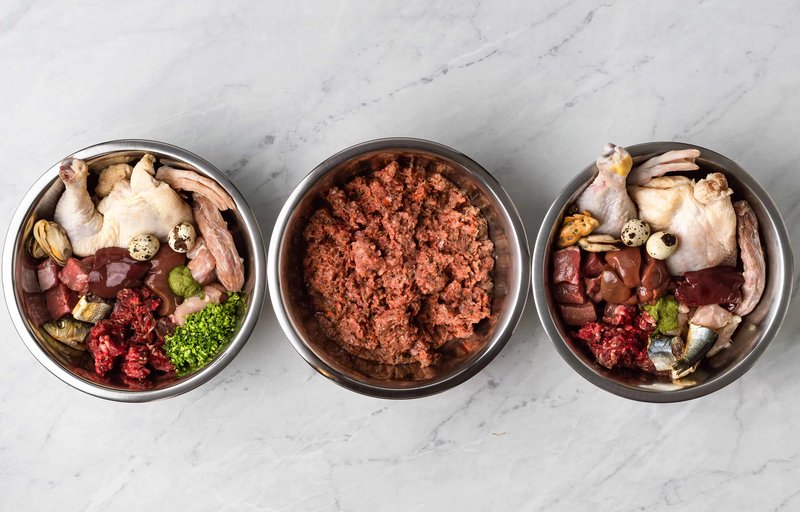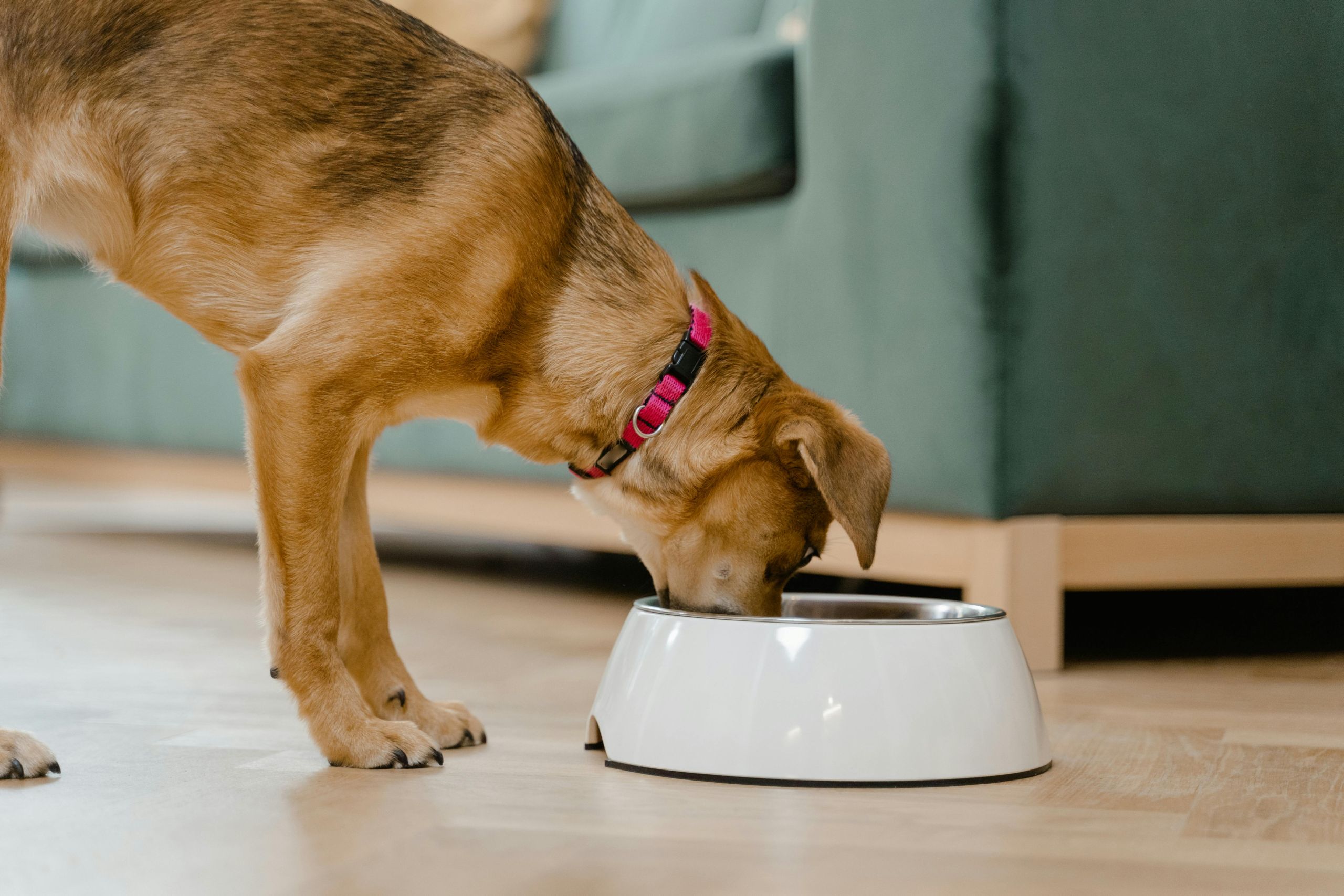Raw feeding has grown in popularity in recent years. With so much information available on the internet and social media, it’s still difficult to know if this diet is a good option for your pet. In this article we hope to guide you through the pros and cons of this controversial way of feeding.

Image courtesy of Primal Pooch: https://primalpooch.com/raw-feeding-guides
Why Not Feed Raw?
Essentially, a raw diet is home-made. This means that you as the owner need to ensure your pet is receiving all of their vital nutrients from their food. Even as a qualified professional, that can be very difficult to achieve.
There are growing numbers of pet food shops and companies that will sell you ‘pre-prepared’ raw food for you to feed, however this does not guarantee that the nutrient balance in these foods is right for your pet, and some nutrients that may not be found in meat can be missed out. Finding the correct nutrient balance can quickly become complicated and tricky to navigate, especially with all of the supplements and food products that all advertise their health benefits available today.
We also know that raw meat carries bacteria such as Salmonella spp. and Escherichia coli (E.coli). Although dogs and cats are able to eat and digest these bacteria in small quantities, it is still deposited in the environment through their faeces and carried in their saliva. This means that great infection control measures need to be in place if you wish to feed your pet a raw diet. This is particularly important if you have family in the home who are immunocompromised (e.g. receiving chemotherapy treatment) or small children, as infection from these bacteria can cause serious illness in humans.
Bones. The risk of tooth fracture from chewing on bones is higher when feeding a raw diet, and the risk of obstruction in your pet’s gastrointestinal tract from the bones being swallowed is also increased and can easily lead to a tragic outcome.

Why Feed Raw?
Each pet will have their own unique dietary needs. Feeding cats and dogs is not a ‘one size fits all’ and that is reflected in the sheer variety of different foods and diets available today.
There’s the argument that commercial pet foods such as kibble and jelly contain more artificial ingredients such as colourings and flavourings, so feeding raw would eliminate that from your pet’s diet and help to improve their health overall.
It is said that a raw diet would also ensure that your pet is provided with high-quality protein, as it would be coming from a pure source. In the case of cats, who are obligate carnivores, this is ideal for fulfilling their nutritional need for Taurine (an amino acid found only in meat).
Dental health may benefit as a raw diet would incorporate meat-covered bones that are rich in calcium, and provide gum massage when being chewed on. A raw diet can be easier to digest for some, produce smaller stools due to the absence of bulking agents in the food and in general it might just be tastier to the animal.
If your pet has allergies, a raw diet may be the only dietary option available to keep flare ups under control if they’re triggered by traditional ingredients in commercial foods.

